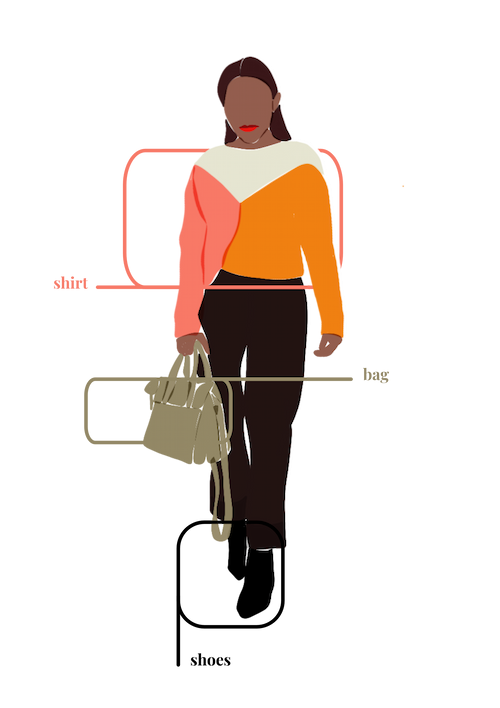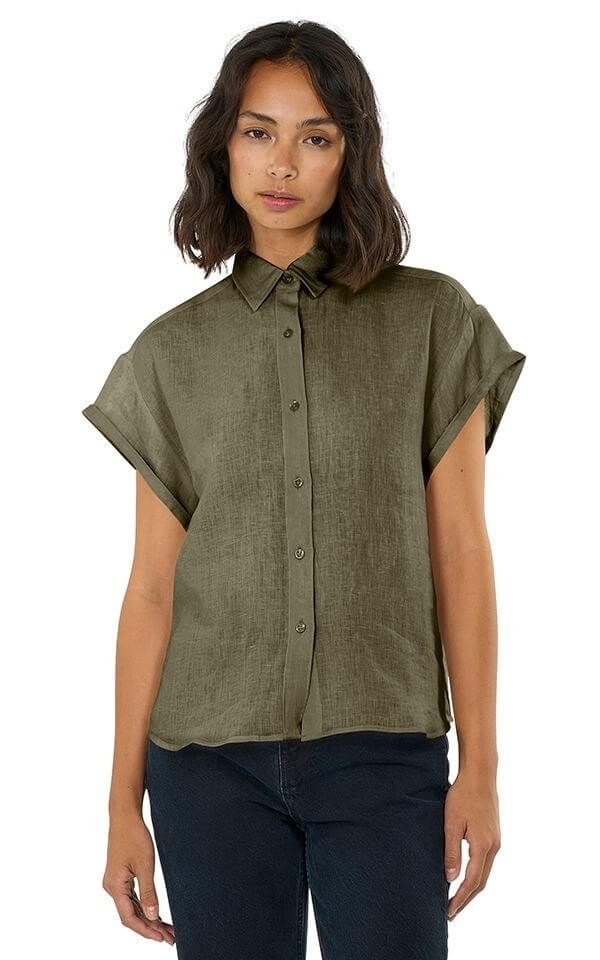- Clothes
- Bags
- Accessories
-
Inspiration
- Shoes
Toxic Dyes in Clothing: Pollution, Dangers &... Colour to Die For?
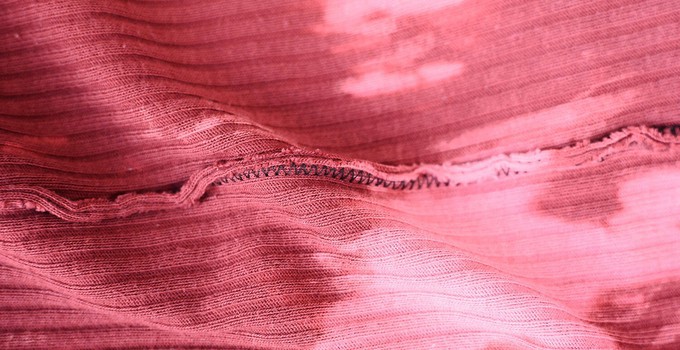
From shop windows to browsing clothes online, let’s face it: it’s usually a garment’s colour that grabs our attention, like a bright red fast fashion dress. Shame that, once you pre-wash it by hand, it’ll turn your sink into a horror film scene.
That’s because it probably involves toxic dyes… like most fast fashion clothes!
But the real horror is that they’re dangerous for humans and contribute to textile dye pollution.
Here’s why—and how you can avoid these toxic dyes.
Are clothing dyes harmful?
Clothing dyes aren’t harmful per se.
However, 90% of our clothes are dyed synthetically, using dyes created in labs through chemical processes.
Depending on how they’re created, that’s when clothing dyes can become toxic and harmful.
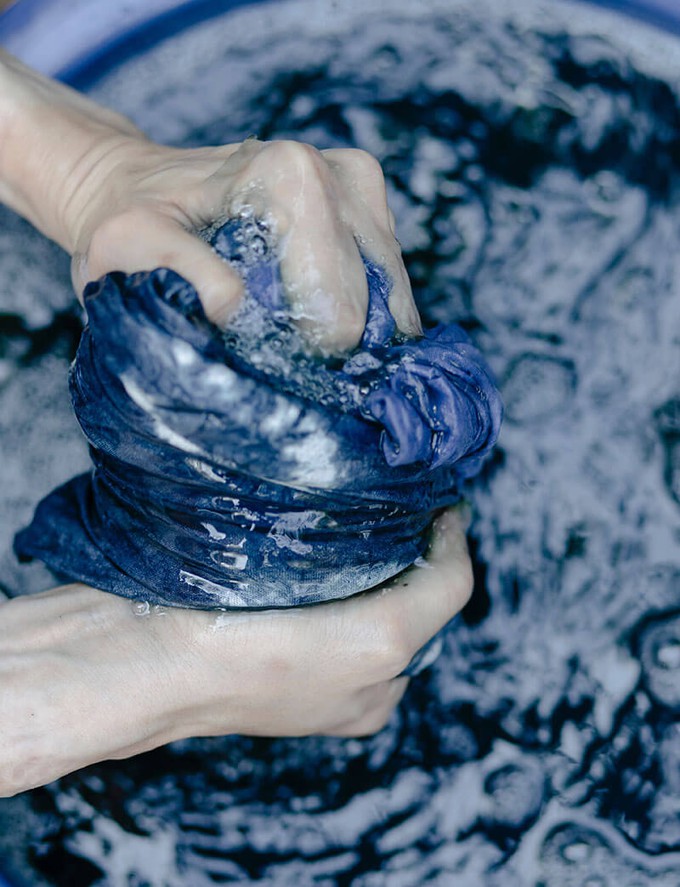
So, what are toxic dyes in fast fashion?
Most toxic dyes are azo dyes, which are also some of the most common toxic chemicals in clothing.
They get their name from the French word for nitrogen (“azote”) because they’re created by combining it with carbon atoms.
Not only is the actual process extremely polluting: these cheap and colourful dyes are also… carcinogenic—and the biggest culprit for textile dye pollution.
The itchy—and serious—problems with toxic textile dyes
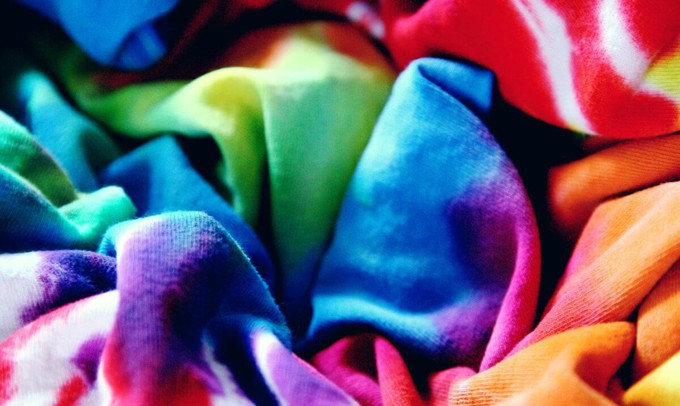
Harmful effects of toxic textile dyes on humans
The toxicity of dyes makes them dangerous for both:
- You as a consumer
- Garment workers
When these dyes are water-soluble, you can absorb them through your skin. As a consequence, they can cause allergic reactions, endocrine disruptions, and even tumour formation, in some cases.
Some of these toxic dyes are considered respiratory sensitisers too, which is especially a problem for garment workers. By breathing them in regularly, they can develop occupational asthma and experience eye irritation, wheezing, and breathlessness.
Harmful effects of toxic textile dyes on the environment
- The production process for most of these dyes has a bad environmental footprint to begin with: it often involves non-renewable sources (like fossil fuels) and high energy use
- The actual dyeing phase requires a lot of water (200 tonnes for each tonne of textiles, to give you an idea)
- Azo dyes are not easily biodegradable
Still, the biggest problem is textile dye water pollution:
- Even though it’s filled with hazardous chemicals (like the mordants used to bond the dye and fabric together) and heavy metals, most of this wastewater returns to nature!
- It’s usually dumped directly into waterways, especially in developing countries. Many Asian rivers are literally turning black!
Harmful effects of toxic textile dyes on communities and wildlife
- More and more people are losing access to clean drinking water
- Untreated water can cause long-term health effects in animals, too
- When it enters groundwater sources, even well water becomes dangerous
- Agricultural land can also be affected by textile dye water pollution
- Once this toxic dye wastewater reaches the ocean, its chemicals can affect all levels of the food chain. Plus, several fishermen claim they struggle to catch fish due to textile dye pollution
If they’re that bad, why is fashion still using toxic textile dyes for clothes?!
Because AZO dyes are cheap, easy to produce, and result in bright and consistent colours… and fast fashion tends to put low price tags before the environment and humans!
Most toxic azo dyes are actually banned in the EU and several countries.
However, if the garments you buy are produced where azo dyes are not banned, you might still end up “wearing them”. Yuck.
So, are natural textile dyes the obvious solution?
Yes and no.
Don’t get us wrong: natural textile dyes—which can come from plants, minerals, or even animals (like crushed insects)—are definitely better than azo and other toxic dyes.
But things are rarely black and white when it comes to sustainability: colourful dyes are no exception.
Ethical pros of natural textile dyes
- Greener environmental footprint: they come from renewable sources, require fewer and usually non-toxic chemicals, and tend to be biodegradable
- Lower water usage
- Not harmful to you and garment workers
Problems with natural textile dyes
- More likely to fade overtime
- Not the best solution for polyester and other popular synthetic options: they tend to bond better with natural fabrics
- While they require less compared to synthetic dyes, they still need plenty of water
- To bind natural dyes to fabrics, some brands still use toxic mordants
How to avoid toxic dyes in clothing and promote a “brighter” future for fashion
1. Choose ethical fashion brands
Fast fashion companies aren’t usually transparent about their supply chain (which often does involve azo dyes). So, ditching them is already a safer step forward!
You can then consider buying from ethical brands that use natural dyes and, most importantly, non-toxic mordants.
2. Look for sustainable fashion certifications (psst: we can help!)
When brands are actively trying to be more eco-friendly, they’re less likely to use toxic dyes. For extra peace of mind, you can look for external certifications:
- The Bluesign and OEKO-TEX standards, in particular, mean that those clothes don’t involve any hazardous chemicals and substances
- If you’re vegan and wish to avoid dyes made from crushed insects, look for the PETA certification, too
“But where do I even start?” Right here on Project Cece!
We brought together hundreds of fairtrade brands and added filters—including sustainable certificates—to help you narrow down your choices.
3. Support innovative brands using new textile dye solutions
Several brands and designers are coming up with ideas to reduce the harmful effects of dyes on the environment and humans.
For example, some clothes now involve:
- Dyes made from proteins or bacteria that produce pigments
- A circular model for wastewater, reusing it instead of dumping it into nature
- Waterless dyes: bypassing the wastewater issue altogether by relying on CO2 during the dyeing process
So, if you see that a fashion brand adopted these innovative solutions, consider supporting them: buy their clothes, engage with them on social media to help them reach more people, and recommend them to your friends.
Colourful toxic dyes are a dark chapter for fashion. Hopefully, natural alternatives and new solutions will lead to a brighter one.
Found this helpful? Start receiving our tips and inspiration to make even more sustainable fashion choices.
Share our story
Related articles
Toxic Chemicals in Clothing: Time to Tackle This Itchy Subject!
From lead to cancerogenic substances, there are THOUSANDS of toxic chemicals in fast fashion clothing! Here are the most common ones (and how to avoid them)
Problems with Fast Fashion: Cheap Clothes, High Hidden Costs
From child labour to toxic dyes, there’s a high hidden cost behind cheap labels. Check out the problems with fast fashion and discover a sustainable solution.
7 Eye-Opening Fast Fashion Documentaries
Looking for an interesting, educational watch? Discover the true cost behind a £2 t-shirt with the best fast fashion documentaries. Spoiler alert: it’s very high.
Project Cece is a platform that collects ethical fashion from vetted brands and shops in one place. Browse ethical fashion for women and men and find items that fit your style, budget and values!
